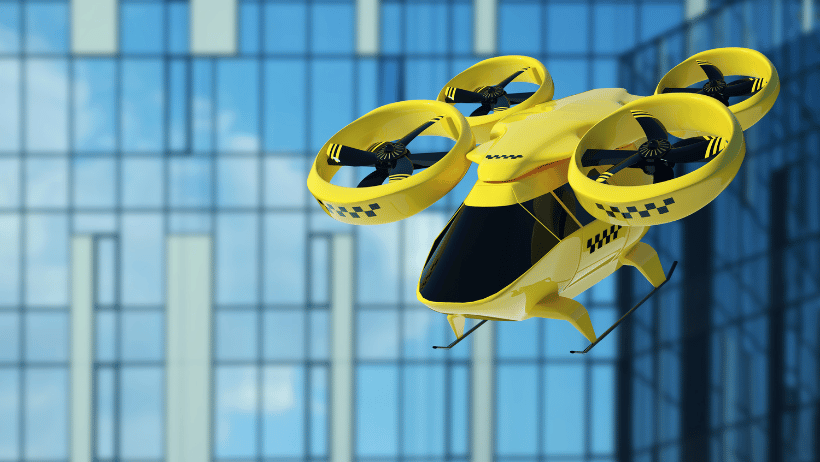Flying Car Benefits: A Game-Changer for Transportation
The idea of flying automobiles has been around for a while. Several films, including “Back to the Future” have featured depictions, and scientific specialists have debated it for years.
Flying automobiles are becoming a reality because of the recent rapid growth of technology. They have the power to alter the way we travel, commute, and even live.

This essay will examine the top 5 advantages of flying cars and how they will revolutionize the transportation industry.
There are a lot of advantages to flying. Compared to driving, it is quicker, more effective, and less exhausting. The ability to traverse farther distances more quickly is another benefit.
Moreover, flying may help to lessen air pollution and traffic congestion. The only issue is that, until recently, only commercial flights were feasible and only the wealthiest people could afford private aircraft.

The Top 5 Flying Car Benefits
- Faster Commutes: By flying over traffic jams, flying automobiles can dramatically shorten commuting times. They can cover greater distances in less time as well.
- Reduced Traffic Congestion: Flying cars’ capacity to go through traffic more quickly and with less stress can help lessen traffic congestion on the roadways.
- Reduced Air Pollution: Comparing flying cars to conventional cars that use gasoline, flying cars are more environmentally beneficial because they are built to be electric. They can therefore aid in lowering air pollution and raising air quality.
- Emergency Response: In instances when roads are closed or impassable, flying automobiles can be beneficial for emergency response teams. They can swiftly travel to isolated locations and deliver supplies or medical care as needed.
- Improved Transportation Infrastructure: A better transportation infrastructure, including takeoff and landing strips, charging stations, and flight paths, may be built as a result of the development of flying automobiles. This may open up new avenues for travel and facilitate easier access to inaccessible locations.

Is There Really a Flying Car?
Yep, a flying car exists. In reality, there are a number of flying automobile prototypes out there, and some of them are even for sale. The Airbus, Terrafugia, and eVolo are three of the most well-known flying car prototypes.
These vehicles are ideal for both short flights and daily commutes because they are built to be both roadworthy and airworthy.
The eVolo, which was created by a German business and employs electric motors to fly, is the most well-known of them all. This flying vehicle can fly up to 300 meters and has a distinctive design.
Which Country Has a Flying Car?
There is a global effort to create flying automobiles, and many nations have taken an active role in it. Nonetheless, the United States has made the biggest contributions.
Many businesses, like Tesla and SpaceX, have made significant investments in the creation of flying cars. The CEO of Tesla and SpaceX, Elon Musk, has advocated for flying cars loudly and has put up the idea of “electric vertical takeoff and landing” (eVTOL) vehicles.

How Much Does the Flying Car Cost?
Depending on the model and the manufacturer, a flying automobile can cost a variety of amounts. The Terrafugia, which costs over $300,000, is the priciest flying vehicle on the market.
On the other hand, the eVolo is reasonably priced, with a sticker price of about $300,000. Like with any new technology, the cost of flying cars is anticipated to decline in the years to come as more producers enter the market and the level of competition rises.
Are Flying Cars Legal in the US?
In the US, flying cars are still illegal. Flying vehicles are not yet permitted for usage since the Federal Aviation Administration (FAA) has severe regulations in place for air transport.
Nonetheless, the FAA has been collaborating with a number of businesses to create guidelines for flying cars, and it is anticipated that they will be authorized for usage soon.
How Far Do Flying Cars Go?
A flying car’s range varies depending on the model and the maker. On a single charge, the most modern flying cars can cover up to 500 kilometers.
However, the majority of flying cars have a range of about 100 miles and are made for brief trips and regular commuting.

Conclusion
In conclusion, the invention of flying cars has the potential to revolutionize the way we get around. They provide a number of advantages, such as shorter commutes, less traffic and air pollution, better emergency response, and better transit infrastructure.
Although flying cars are now illegal in the US, it is anticipated that they will soon be permitted for usage, ushering in a new era of faster, more effective, and environmentally friendly transportation.
It is fascinating to consider the potential for the future of transportation and the beneficial effects it may have on our lives as technology develops.




